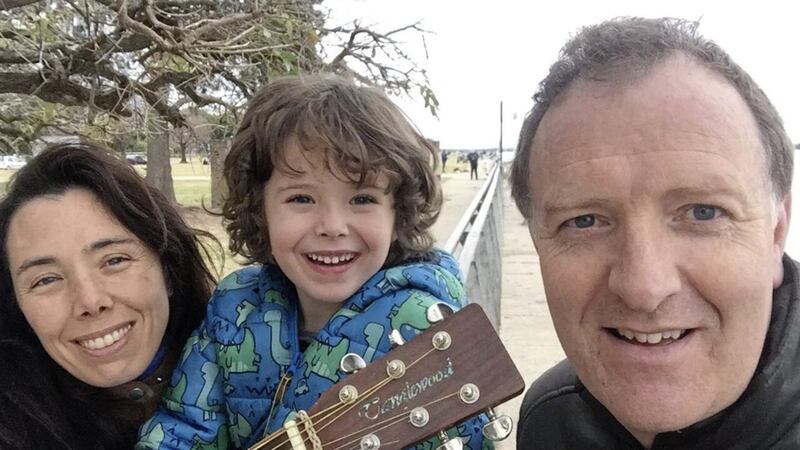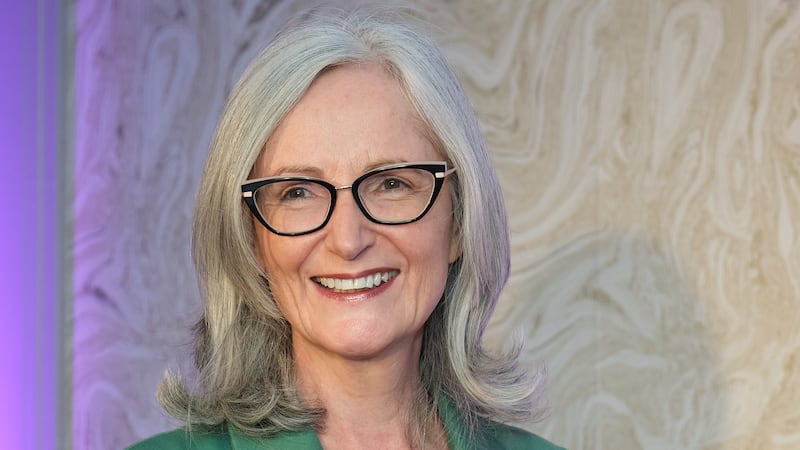In Belfast, back in the days of sunshine and big, fun-filled gatherings and hugs and sweet, sweet music, you could go into a music venue or a pub, or a hall, and hear all kinds of music that would raise your spirits.
You could hear a gypsy jazz band in The Sunflower, traditional music in Madden’s, Gaelic singing in the Cultúrlann, An Droichead, the Duncairn or Áras Mhic Reachtain. Or learn how to samba while listening to some Cuban music with other Latinophiles.
But out of the public gaze, in homes all over the city – like others throughout Ireland – people who play in brass bands are tuning their tubas and trombones; indie rockers are throwing shapes leading to an ear-pounding crescendo; kids are learning their scales on their pianos; fife players and pipers are practicing tunes; a soprano is practising an aria; bodhrán players are beating the bejasus out of a tightened pig-skin.
In urban and rural houses, Indian and Asian families and Roma families and families from all over Africa and groups of Latinos are playing instruments and singing songs they learned in distant places and that are exotic or backward to us but home to them.
Wouldn’t it be great to swoop over them all to listen to the unheard soundtrack of Belfast or Derry or Cork or Dublin?
As there is so little live music going on, I took to musing about Belfast’s cosmopolitan music scene. Nowadays, I’m learning Spanish via Zoom with my Argentinian teacher, Sol Martin, who lived in Belfast but has now moved back to her home city of Rosario, famous for its neoclassical, Art Nouveau, and Art Deco architecture that has been retained over the centuries in hundreds of houses and public buildings.
Accompanying her are her Newry-born husband, David Cunningham, and their son, Luca.
Before the trio left for Argentina, we had a series of “Argentinian wakes” in the good old Irish tradition when seeing someone off on a long journey.
And great nights they were too, of food, talk, stories, poems and songs, the Irish and the Argentinian songs complementing each other.
So, after today’s Spanish class, I asked Sol if her native Rosario is a musical city?
“Well it has been very big in the national rock scene, with many big stars coming out of the city, but for tango or folk music there are just pockets here and there and depending on who is in your circle, you might hear a lot of it, or hear nothing at all,” she explains.
“You have the chacerera and samba – but tango isn’t considered folk music. The rhythms change depending on what part of the country it is played, so that, for example, in the north west near Bolivia, you have the cueca, which is quite slow and with almost no accompaniment, whereas in the north east, toward Brazil, you have chamamé which is accompanied by a button accordion and is much faster.”
Sol says one side of her family was musical, the other not so much but she had a great-uncle, Chacho Müller who was a well-known folk music and song composer, whose songs were played by some of Argentina’s best-known singers, my own favourite, Mercedes Sosa, included.
Sol came to the north as part of an exchange deal organised by the British Council for teachers of English in Argentina to go to the UK to teach Spanish for a year.
“Of the 10 teachers who were chosen to go, nine went to London but I was assigned to – Newry!”
All things considered, it was a stroke of luck. While out for the night at the Railway Bar, she met David, an art therapist, and their mutual love of music and literature – and many other things – led them to the altar.
David had got interested in traditional song when he was studying at the Glasgow School of Art.
“I was really, really taken by listening to emigrants from the north of Ireland – Kevin Mitchell, Willie Devine, whose north Derry accents you can really hear through the songs,” he recalls. “Then back in Newry, I found there was a session in the town with the coming of the ceasefires and singers were making themselves known again.
“I became friends with a lot of the musicians and got involved in lots of sessions and learned to love of the craft of singing.”
For David, his favourite type of song is about the underdog, although he might be singing about people he has observed in the Railway Bar.
For Sol, the melody is very important but… “there are so many songs written about women being taken advantage of but they still run after the men, crying ‘you said you would marry me’ and all that but I prefer songs like The Widow’s Song and songs that point out that something is wrong or songs that take the shame out of enjoyment.”
And as David points out, it’s rare to hear a woman sing a bawdy song.
But with the range of human emotions not very large among all 7,800,000,000 of us – as estimated in March this year – the songs that we use to express them will be quite similar all over the world.
However, Sol believes that there is a difference between Irish and Argentinian song.
“Argentinian folk songs are usually more descriptive,” she says. “It’s also a very static thing – this is me, I’m here and I’m feeling this way – and I don’t think our culture has as many songs which tell stories the way the Irish have.
“We do have immigrant songs but in Argentina, the migration is more internal, from rural parts of the country to the big cities like Buenos Aires and Rosario.”
However, at our Argentinian wakes, despite the dissimilarities, our two cultures were perfectly at home with each other.
:: You can find out more about Sol at her facebook page, la casa del sol.







